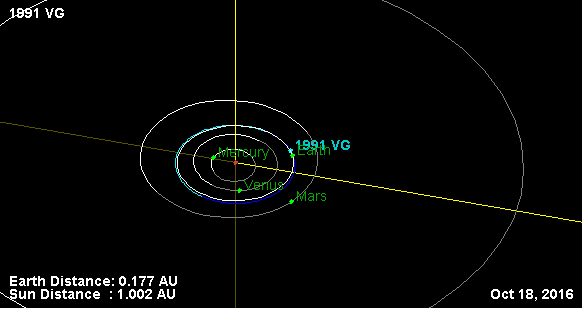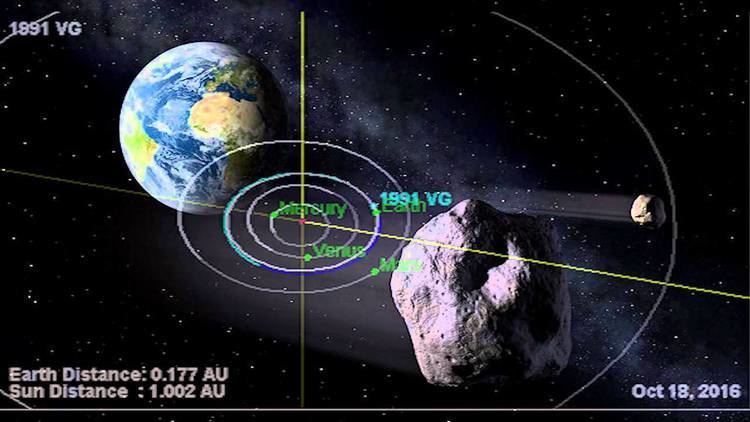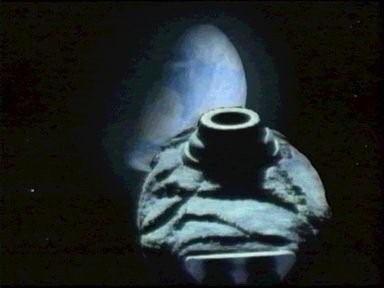Discovery date November 6, 1991 Discovered 6 November 1991 Argument of perihelion 24.62597° Earth moid 0.5 cm | Alternative names MPC 28316 Observation arc 173 Inclination 1.445423° Mean anomaly 36.52549° Asteroid group Apollo asteroid | |
 | ||
Discovered by Steward Observatory (691) Aphelion 1.0773277 AU (161.16593 Gm) Similar Solar System, 2000 SG344, 4581 Asclepius, 2006 RH120, 1862 Apollo | ||
Strange near earth object 1991 vg will pass by again in 2017
1991 VG is a near-Earth object discovered by American astronomer James Scotti on 6 November 1991, using the Spacewatch Telescope on Kitt Peak.
Contents
- Strange near earth object 1991 vg will pass by again in 2017
- Mysterious object will pass earth in 2017 and some say it could be alien 1991 vg
- Earth like orbit
- Possible monolithic structure
- Possible artificial origin
- References

Mysterious object will pass earth in 2017 and some say it could be alien 1991 vg
Earth-like orbit
On November 6, 1991, Scotti discovered a faint object which was designated 1991 VG soon after discovery. The object's heliocentric orbit was found to be very similar to Earth's orbit and it was calculated that it would make a close approach to Earth just a month after discovery (on December 5, 1991). Given such an Earth-like orbit, the dynamical lifetime of such an object is relatively short with the object quickly either impacting Earth or being perturbed by Earth onto a different orbit. The similarity of its orbit with Earth was also very difficult to explain from natural sources, with ejecta from a recent Lunar impact or non-gravitational perturbations such as the Yarkovsky effect having been suggested. The first Earth Trojan asteroid, 2010 TK7, was later identified and such objects could well be a source for objects like 1991 VG.
Possible monolithic structure

Since the discovery of 1991 VG, about 80% of small asteroids with absolute magnitudes (H) fainter than 22.0 (corresponding to sizes smaller than about 200 meters) which have had their lightcurve measured have rotation periods under 2 hours. Such rapid rotation rates are typically associated with asteroids that are monolithic bodies or welded conglomerates having sufficient intrinsic strength to counteract centrifugal forces. More slowly rotating asteroids are sometimes gravitationally bound aggregates.
Possible artificial origin
The uncertainty of the object's origin, combined with rapid variation in the object's brightness in images obtained during its close passage with Earth in early December 1991, led to some speculation that 1991 VG might be a spent rocket fuel tank. There was speculation that it could be a rocket body from a satellite launched in the early 1970s, or from Apollo 12 mission.

